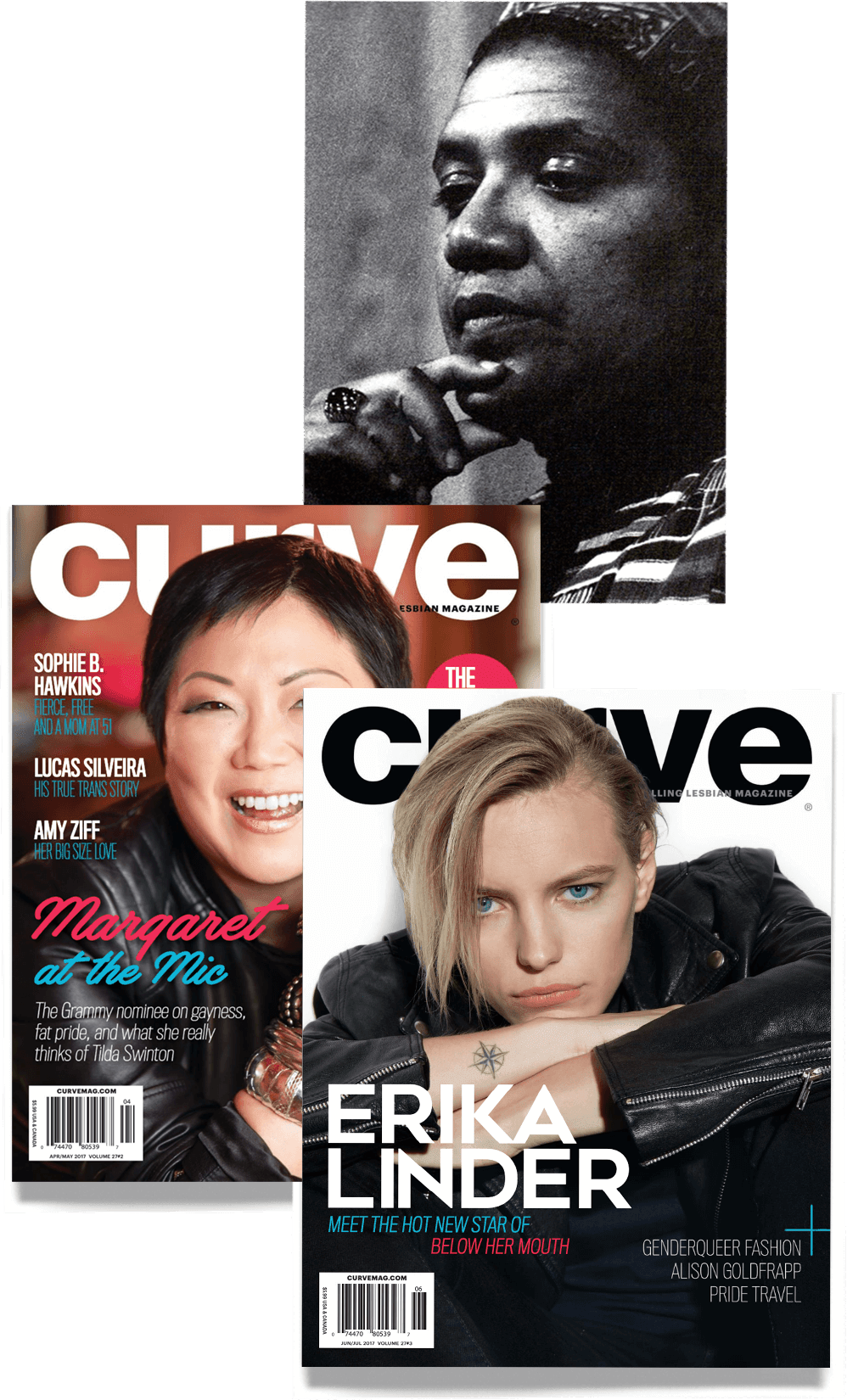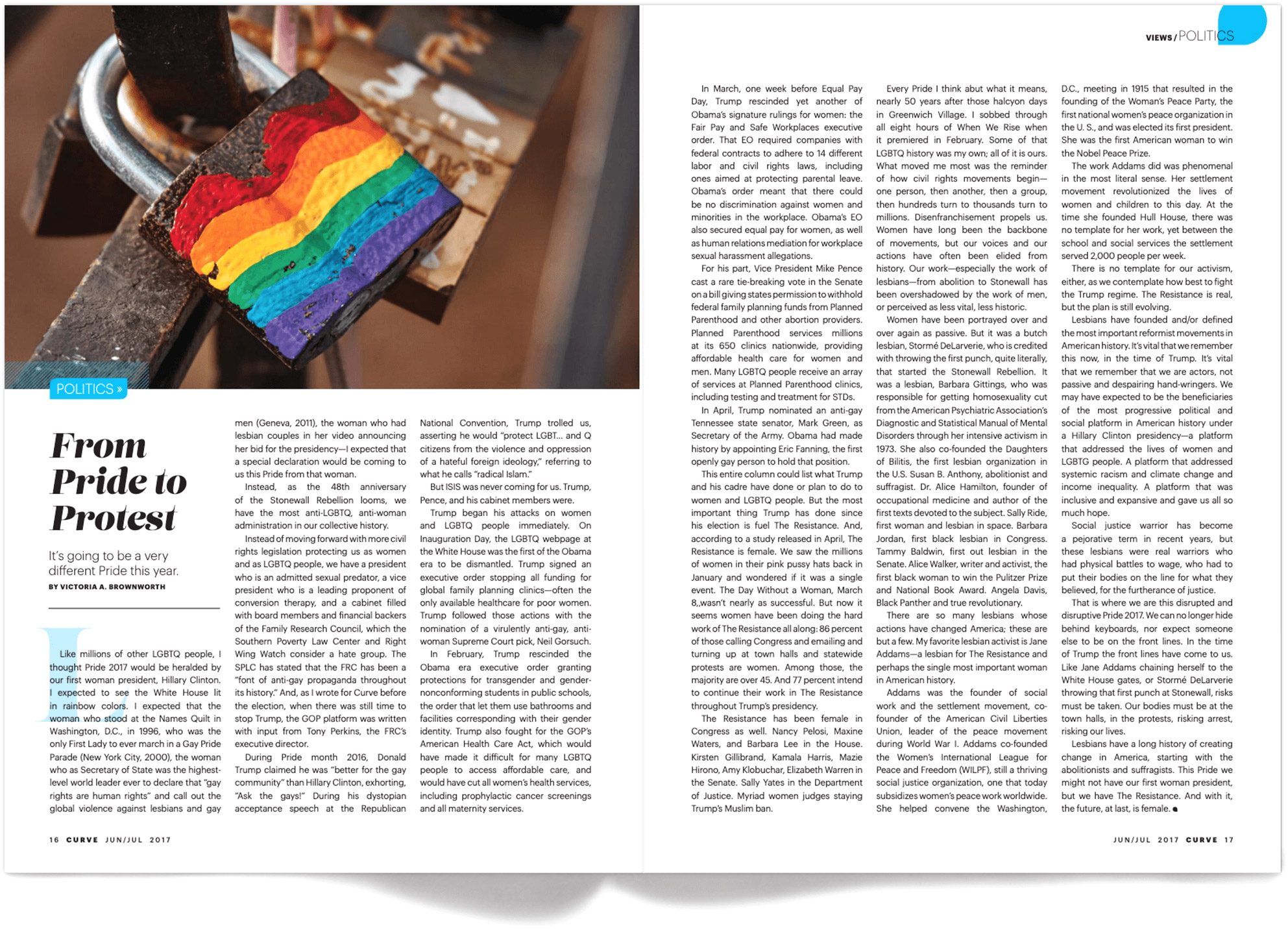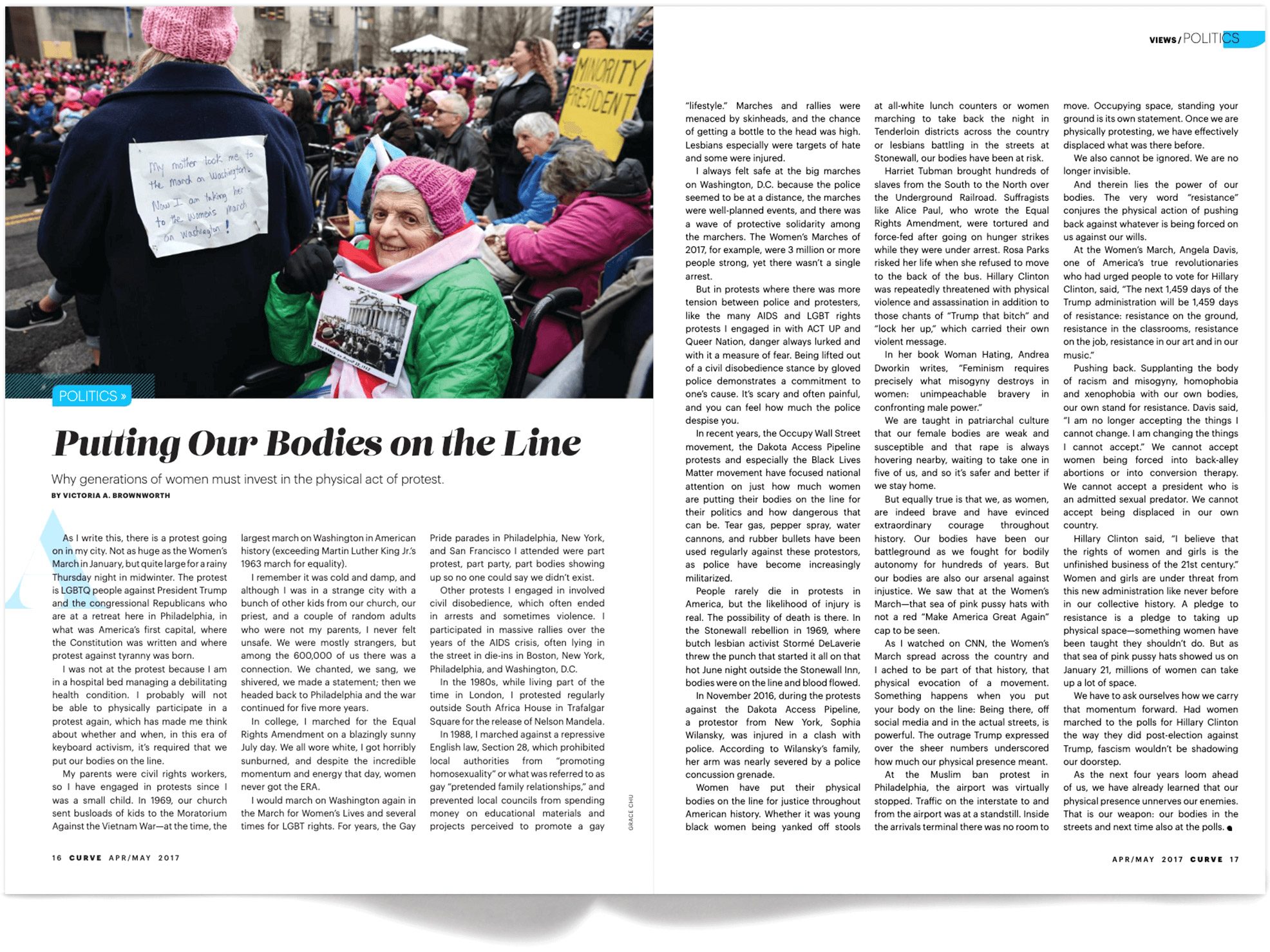For many women, lesbian identity is inherently political. Women loving women strikes a blow against misogyny and is one way of challenging the compulsory heterosexuality of the patriarchy. “Lesbian” is a minority identity, and it often intersects with other marginal identities. Curve’s long-time columnist Victoria A. Brownworth was deeply influenced to cover the politics around lesbian identity after a memorable connection with Audre Lorde.

When Audre Lorde described herself as a “black, lesbian, mother, warrior, poet,” she suggested that a woman’s identity involves many connected aspects: gender, race, sexual orientation, class, age, and more. Although Kimberlé Williams Crenshaw coined the term “intersectionality,” Lorde had already invoked it to demonstrate the connection between identity and oppression. In I Am Your Sister: Black Women Organizing Across Multiple Sexualities, Lorde wrote: “I am a Black Feminist. I mean I recognize that my power, as well as my primary oppressions, come as a result of my blackness as well as my womaness, and therefore my struggles on both of these fronts are inseparable.” It follows that Lorde’s other front — lesbian — was as inseparable as her Blackness and her womaness as well.
In her essay “Dancing with Audre Lorde” Curve’s political columnist Victoria A. Brownworth recalls being in her 20s and meeting Audre Lorde at an intimate New York City dinner party in the early 1980s. There was wine, and music, and the company of several fascinating lesbian-feminists.
And then there was Audre, right in front of me, asking me to dance. Audre Lorde. Icon. Audre Lorde, whose work emanated the kind of raw fire I wanted to write myself.
I can’t explain how it felt to be in her arms. It’s easy to say it was a rush, but it was more than that. Because I felt then and in the 30 years since, that she was transmitting something to me. Something visceral and deep and essential — as in, the essence of. The essence of her, of what she knew and was. It stuck to me, whatever she had poured out onto me as she held me and talked and laughed in my ear and moved me around the small bit of open floor with her vivaciousness and so-much-Audre-ness.
A romance heroine would say, “I was a willing captive in her arms.”
And I was. Willing. Captive. Captivated. Mesmerized.
Whatever it was about her stuck to me — her scent, her realness, her voice, her laugh. It stuck to my winter white and my eagerness and my unsureness beneath the bravado of youthful prettiness.
It stuck to my heart.
How did I know then, when she finally let me go, that it was a dance that would change my life forever?
It is that kind of contact, that exchange between women, that is so powerful. It is one of the reasons we gather: to bring about change, in ourselves and for ourselves, and in and for each other.
In 2016, women all across America stormed the streets of major cities and small towns to protest the election of Donald Trump; this reinvigorated, multi-generational, inclusive wave of feminists gathered to assert that women’s rights are human rights.
Victoria Brownworth covered this latest wave of feminism in the 2017 issues of Curve as a vital example of women turning Pride into protest. She connected it with her own — and many queer women’s— history of protest: Marching for the Equal Rights Amendment in 1978; ACT UP; anti-apartheid; the March for Women’s Lives in 2004; Occupy Wall Street; Dakota Access Pipeline protests; anti-Muslim ban protests; Black Lives Matter; and half a century of Gay Pride marches, the first held one year after Stonewall. All of these moments of protest were inherently intersectional.
Brownworth had been a political writer since the early days of Deneuve and her first cover story in June 1993 was one that would have made Audre Lorde proud: Linda Villarosa, a Black lesbian woman with a Latinx surname who was,at the time, the editor of Essence magazine. Brownworth recalls, “I had been writing for the gay, feminist and mainstream press since college, but writing for a magazine devoted solely to lesbian content was definitely a new and different thrill for me. And having a cover story on a Black lesbian was particularly powerful.”
Brownworth is the daughter of white Socialist Civil Rights worker parents. At 16 she was expelled from her all-girls high school for being a lesbian, baptism by fire to be sure. “Soon after I was put in a mental hospital for conversion therapy. I’ve been fighting for queer rights ever since,” she reveals.
A big part of that “ever since” has been with Curve where she has poured 30 years of activist experience into 30 years of lesbian-feminist journalism, amplifying the stories of queer women and non-binary people year after year. Brownworth reminds us that the magazine itself was a space where we could all meet and bear witness to the discrimination lesbians — particularly lesbians of color, trans, and gender nonconforming lesbians face.
“The summer of 2020 was fraught with protests over police violence. Black Lives Matter was founded by three Black women who describe themselves as radical activists. One is a lesbian and one is queer. Black and brown LGBTQ people have long been leaders in our movement, but have often been discounted and dismissed,” Brownworth reminds us.
“We cannot forget that our Pride movement was birthed from police violence — Stonewall — and that a biracial lesbian, Stormé DeLarverie, allegedly started that fight. DeLarverie, the butch lesbian whose scuffle with police was, according to eyewitnesses, the spark that ignited the Stonewall riots, spurring the crowd to action, has been erased from many accounts,” Brownworth notes.
In her article “Putting Our Bodies on the Line: Why generations of women must invest in the physical act of protest” Brownworth noted that queer women have shown up time and again for justice throughout American history. We have shown up in public spaces with other women and marched shoulder to shoulder for what we believe in. Though many areas remain vexed by the Covid pandemic, this Pride season, several marches will happen in person. Whether physical or virtual, when we go back into our LGBTQ+ world, here’s to imagining that we are dancing with Audre Lorde.

